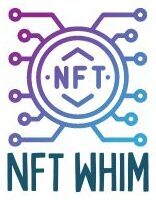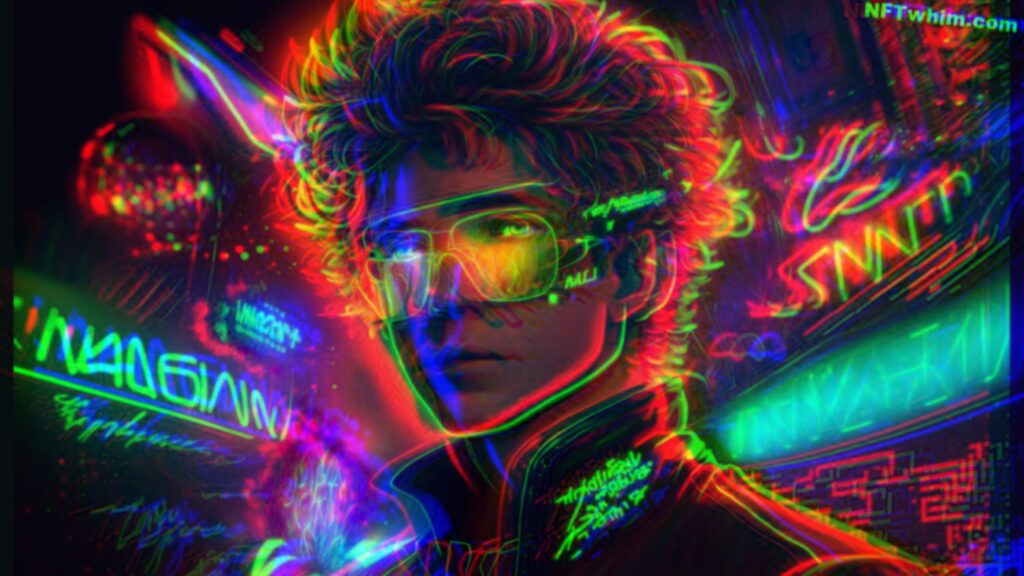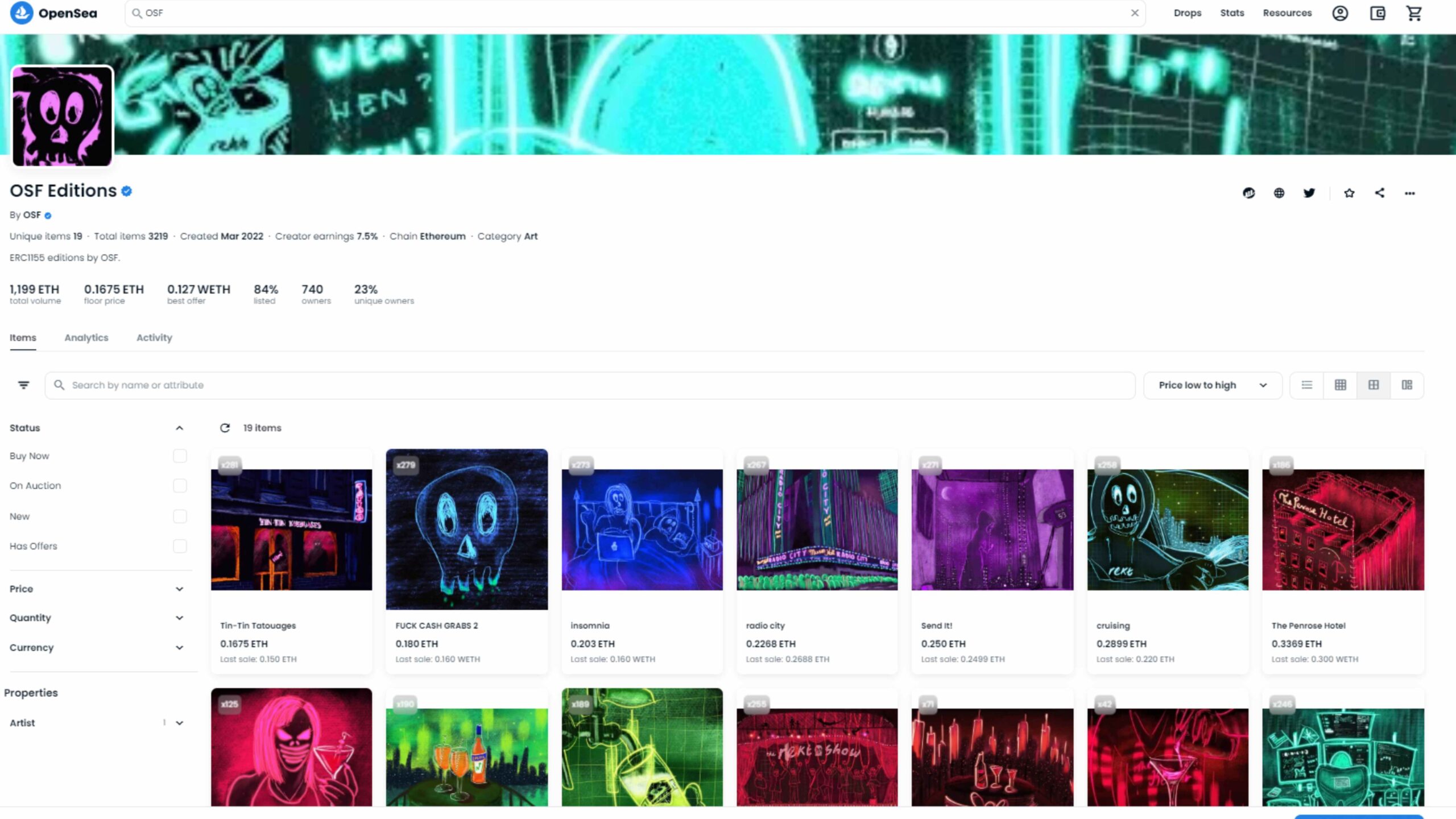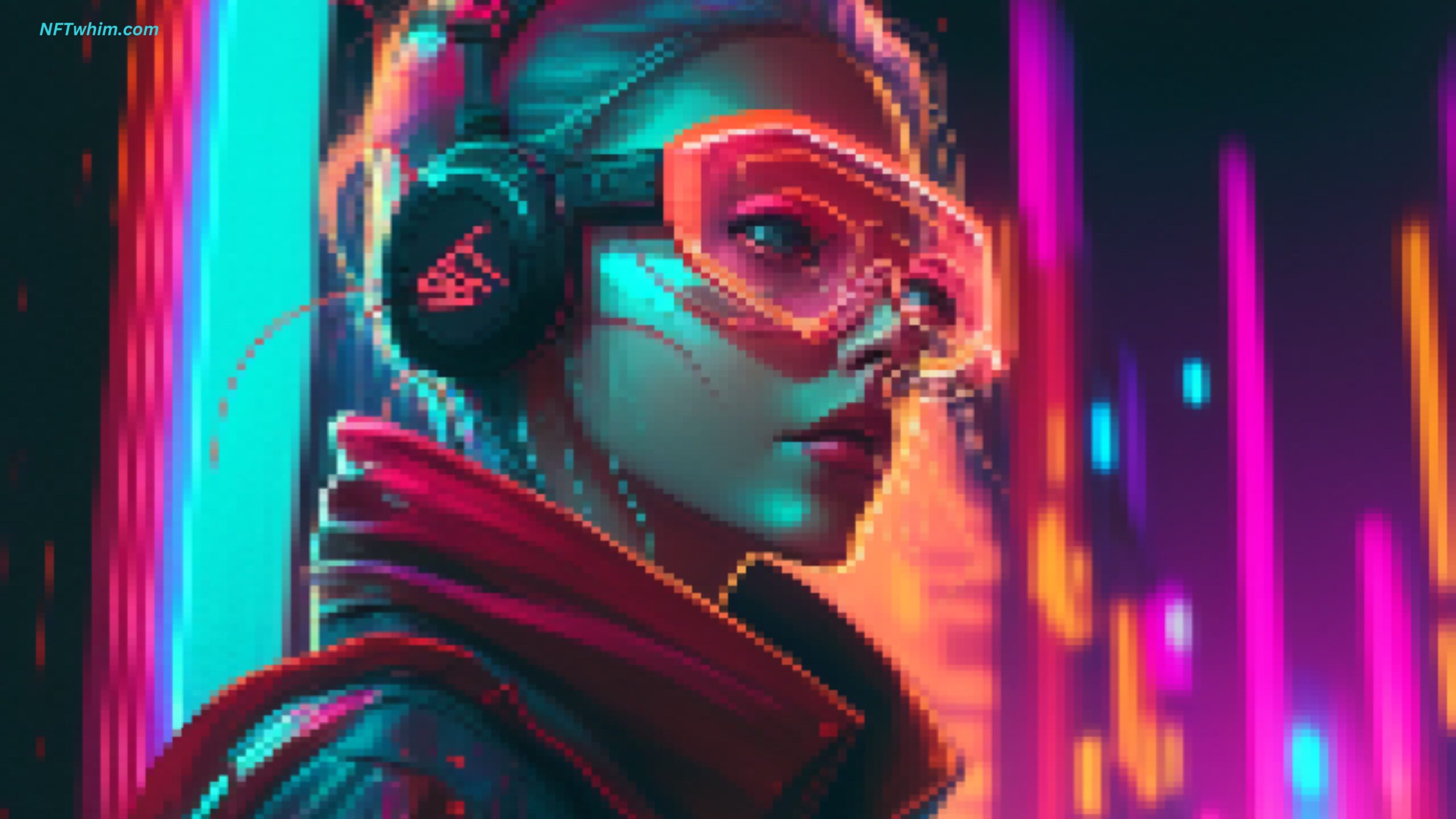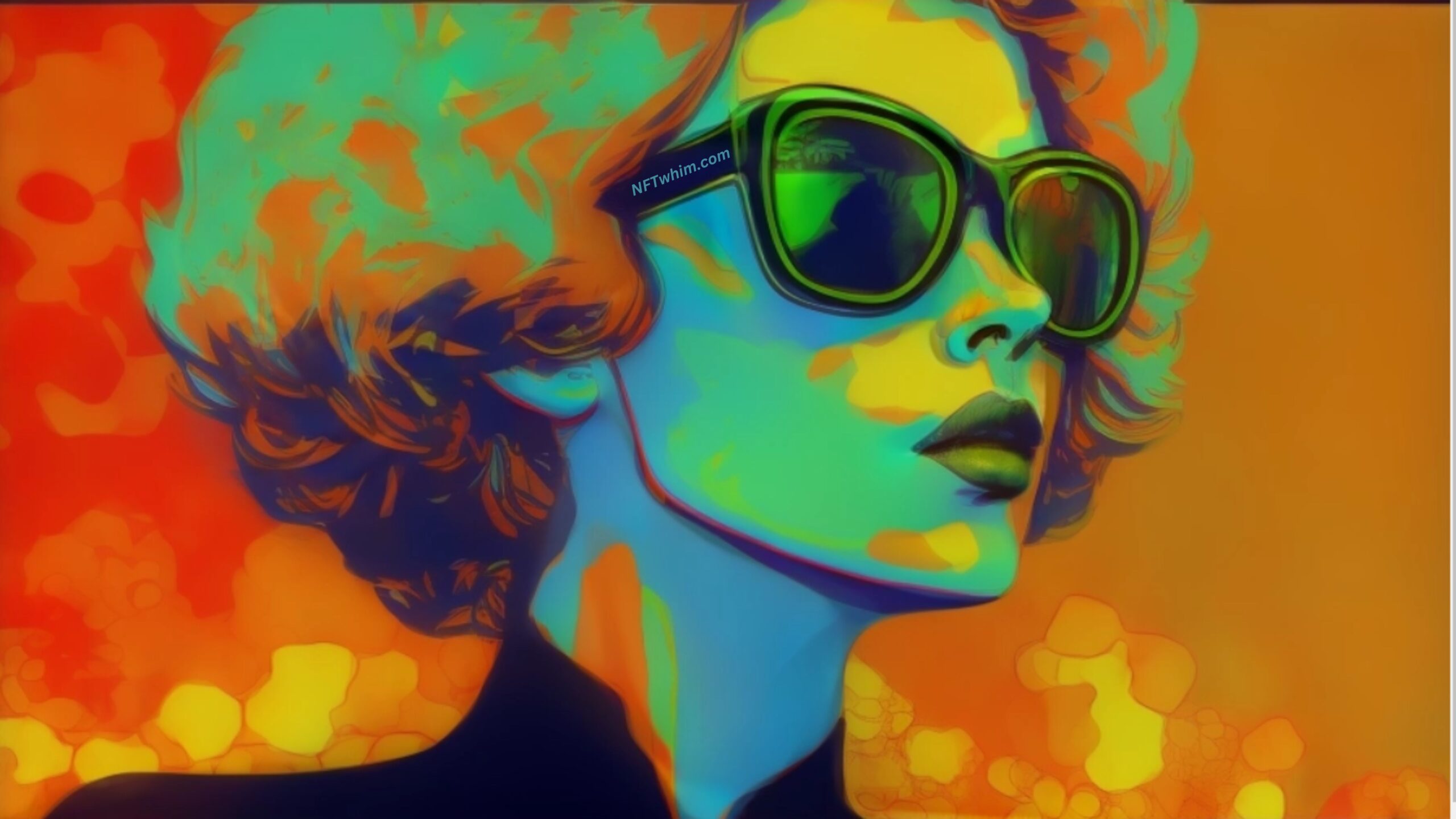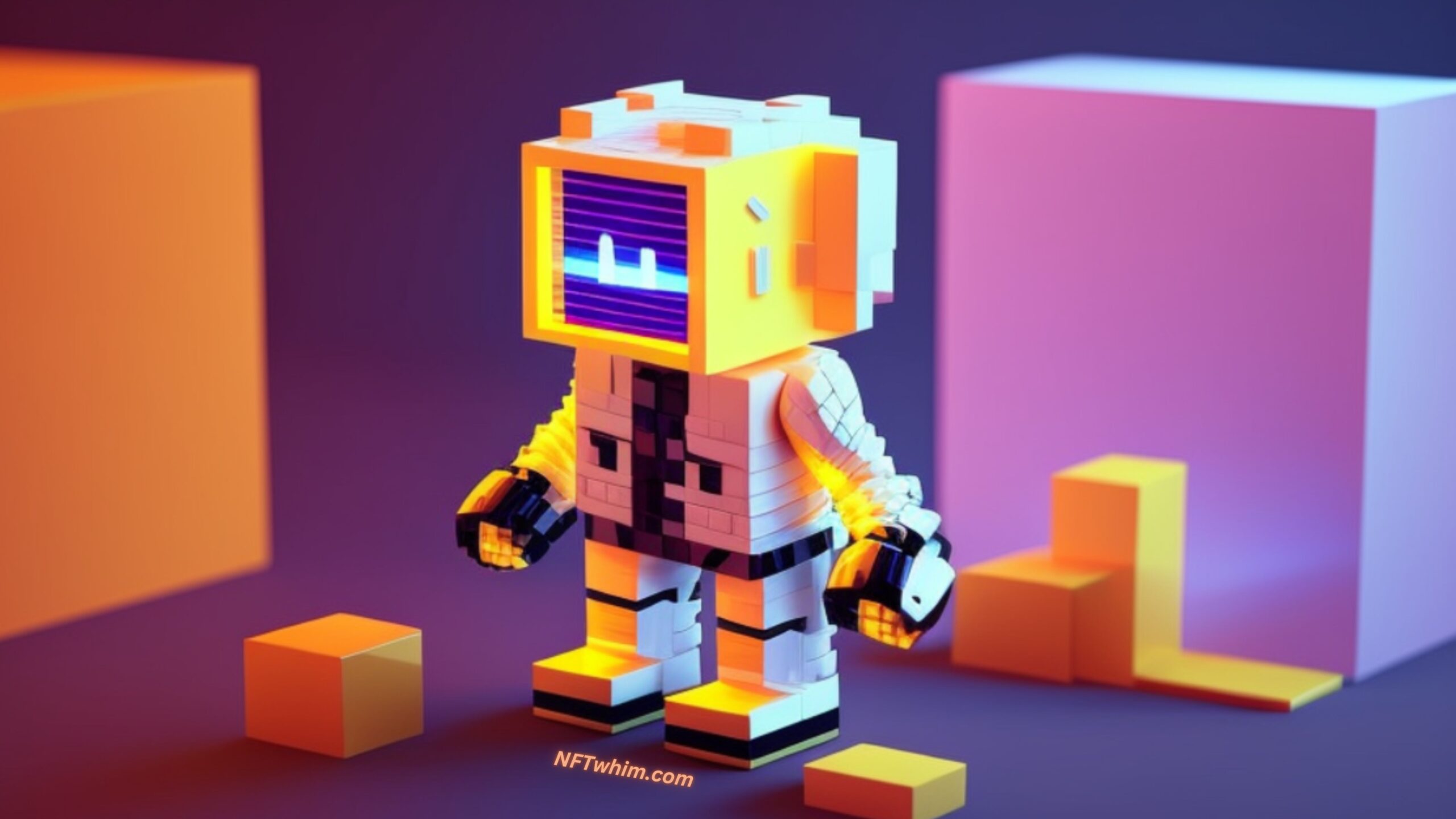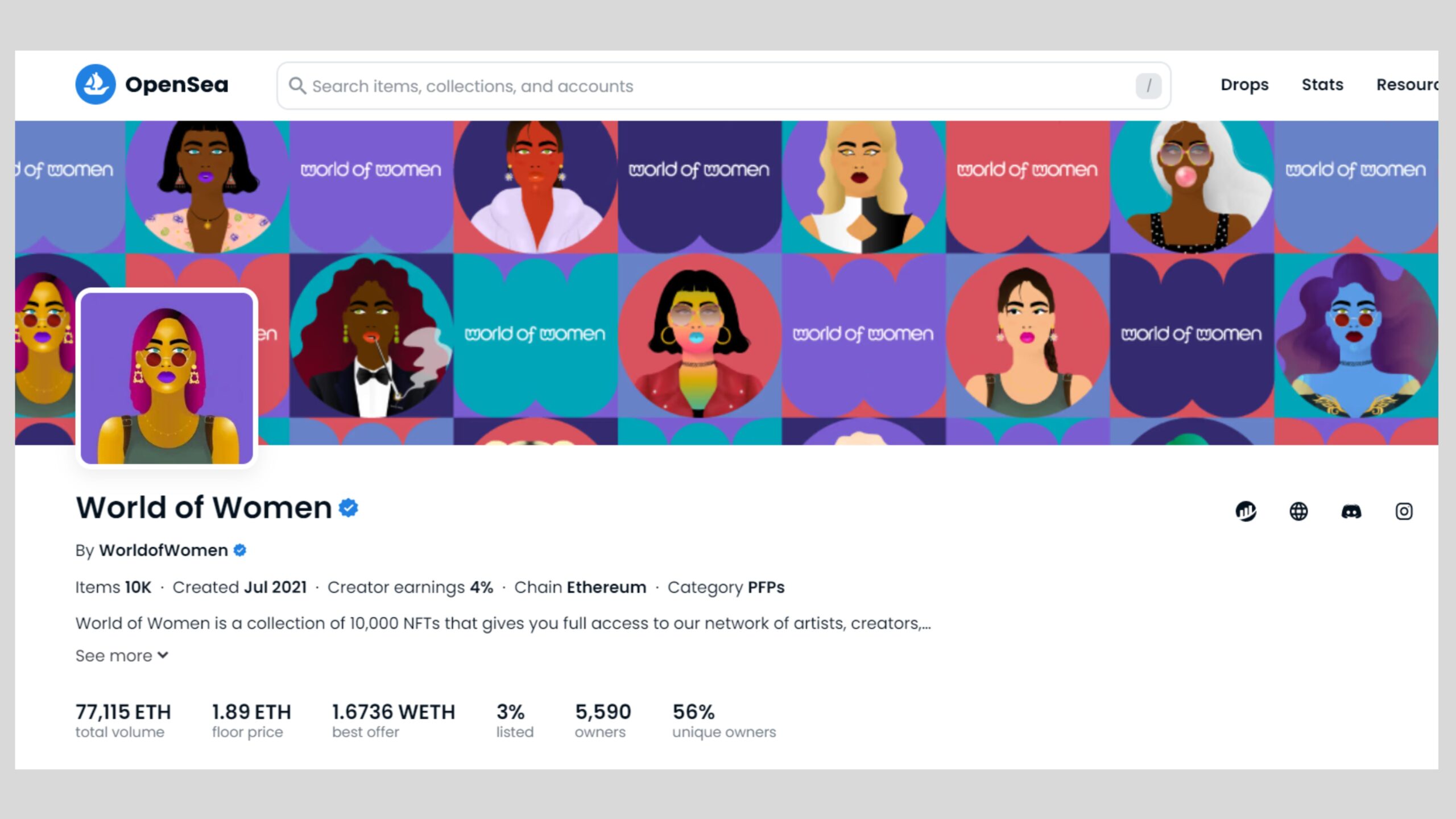Are you ready to revolutionize your art experience? In recent years, a new digital art form has been disrupting the art world: Non-Fungible Token (NFT) Glitch Art. This unique form of artwork is pushing boundaries and inspiring viewers in ways like never before. As we explore this innovative concept, let’s take a look at what NFT Glitch Art truly stands for; how it is changing the artistic landscape; and why it’s becoming such an important part of our creative culture.
Undeniably captivating yet still experimental in nature, NFT Glitch Art provides us with an unprecedented chance to explore our innermost passions while challenging conventional ideas around visual expression in the process. If you’re itching for something beyond ordinary – something revolutionary – then join us as we uncover everything there is to know about this fascinating movement!
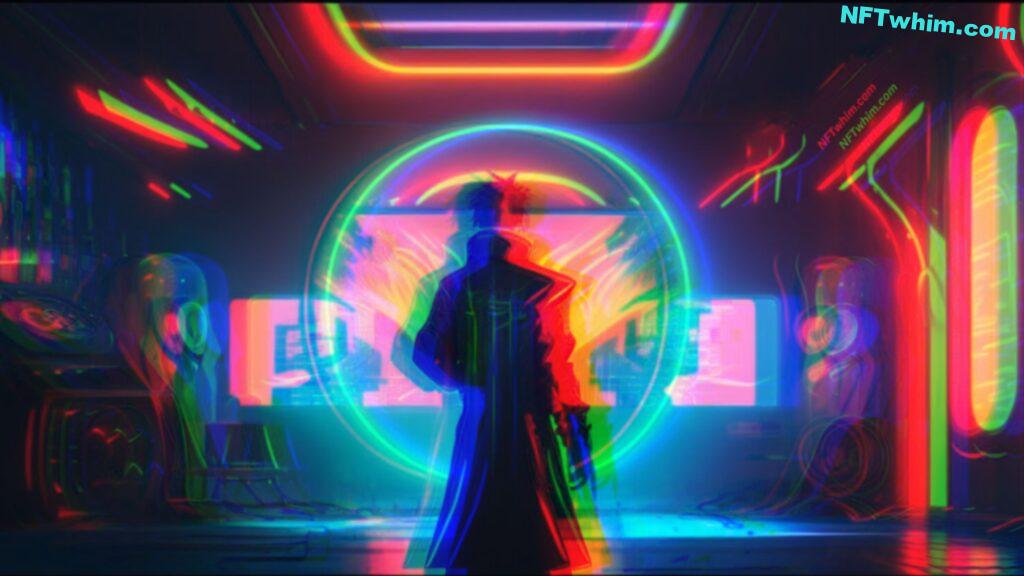
Also, read this guide if you’re interested in producing your own NFT Glitch Art.
Definition
NFTs, glitch art and digital art are all terms that have recently become popular within the world of modern visual arts. But what do they mean? Let’s take a closer look at each definition to get an understanding of their revolutionary impact on the creative industry.
NFTs (Non-Fungible Tokens) are digital assets stored on a blockchain network as immutable tokens. They represent ownership over unique digital objects such as artwork, videos and audio clips – allowing buyers to purchase tangible proof of authenticity for these items. NFTs also enable customers to easily resell or trade them online with lower transaction fees than traditional markets.
Glitch art is an aesthetic style that utilizes errors in digital systems to create unexpected visuals and effects. It can be used to manipulate images, text, sound and 3D models into distorted forms which often result in abstract compositions full of vibrant colors and shapes. Glitch artists intentionally use glitches as tools for experimentation and exploration — resulting in never-before seen works of art!
Digital Art refers to any type of artwork made with computers or other electronic devices such as phones or tablets. Digital paintings, photographs, sculptures and installations are some examples — but this medium can encompass almost anything imaginable! As technology continues to evolve so too will the possibilities available to digital artists — leading us down exciting pathways into uncharted territory where creativity knows no bounds!
The definitions above provide just a glimpse into a rapidly evolving landscape where NFTs, glitch art and digital art continue disrupt traditional boundaries surrounding visual expression. So, welcome to the era of decentralization – where freedom reigns supreme!
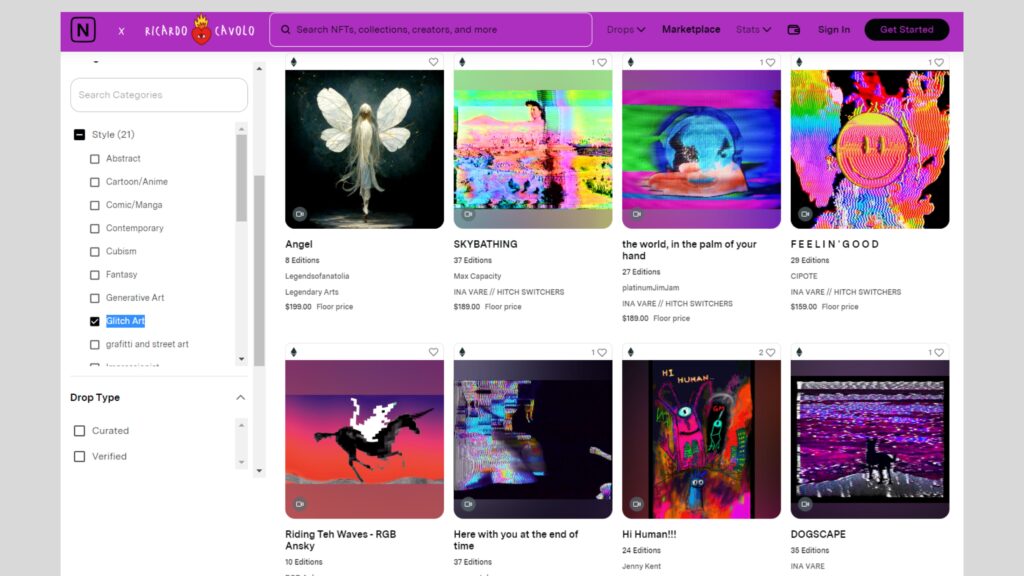
History Of Glitch Art
Glitch art has had a long and intricate history. It is an analogue of digital art that has been around since the late 1970s. However, its modern iteration began to gain traction in the early 2000s as technology advanced. The predecessor and early technique of glitch art can be traced back to the birth of computer-generated imagery (CGI) and video game glitches.
Early glitch art was seen as a form of rebellion against traditional media forms, and it quickly became popular with artists who wanted to explore new ways of creating artwork.
The development of glitch art in the mid-2000s saw the emergence of more sophisticated techniques such as data manipulation and image warping. By this stage, there were also numerous online communities devoted to exploring and sharing different types of glitch art. These tended to focus on aesthetics rather than technical aspects, which allowed for experimentation with colour palettes, typography, and other elements. This period also saw the rise of memes related to glitch art, which further helped spread its popularity across social media platforms like Instagram and Twitter.
Today, the use of NFTs (non-fungible tokens) is transforming how we view digital works of art – including those created using glitch techniques – by allowing creators to easily monetize their work without having to go through intermediaries or galleries. This has opened up a whole new world for both established artists looking for new opportunities as well as aspiring creatives eager to break into the market. This new space has also attracted many collectors looking to get their hands on rare art NFTs.
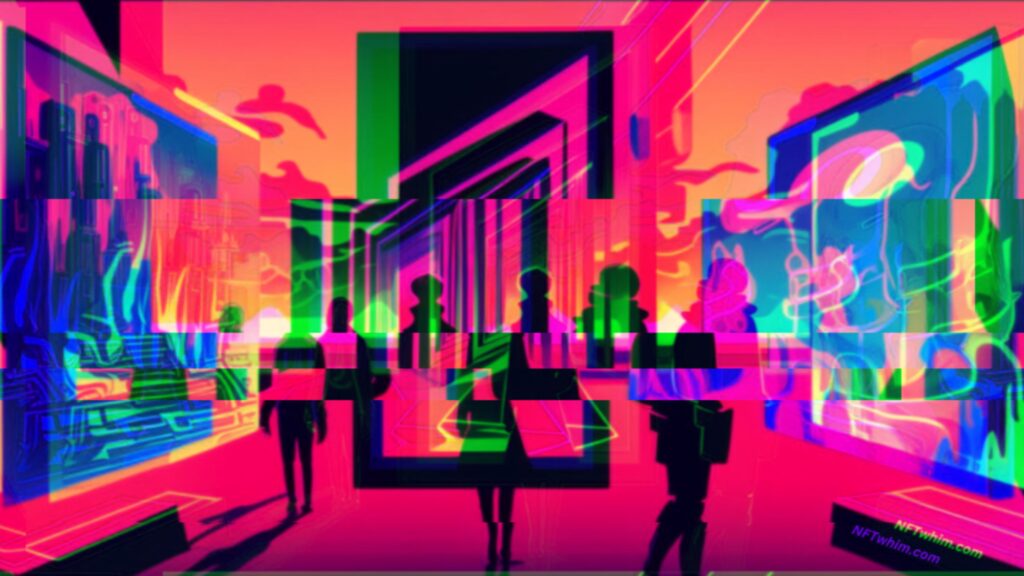
What Is An NFT?
NFTs, or Non-Fungible Tokens, is a disruptive technology has changed the way we think about digital art and is quickly becoming a multi-billion dollar industry. To understand what an NFT is and why it’s gaining so much attention, let’s take a look at some key points:
- An NFT is a type of digital token stored on a blockchain ledger.
- It can represent any sort of digital asset such as artwork, music, videos and even tweets!
- Each NFT is unique and non-interchangeable from one another, thus making them scarce and potentially valuable in our increasingly digital world.
- The cost associated with buying or creating an NFT vary greatly depending upon demand for the particular asset being bought or sold.
NFTs are revolutionizing how people interact with digital art by allowing anyone to purchase ownership rights to rare pieces without relying on galleries or tech companies. As more artists join the movement, they bring new life into previously untapped markets while also giving back power to creators who once had none. For example, digital artist Beeple has made over $69 million after auctioning off his NFT piece titled “Everydays – The First 5000 Days” which consisted of 5,000 individual images he created during that time period! His success demonstrates just how far this sector has come in recent years and its potential for future growth.
The emergence of NFTs offers us all a newfound sense of freedom when expressing ourselves through art; no longer do we need to depend on big institutions if we want to make money selling our work online. Additionally, since these assets are stored securely on the blockchain there is little risk involved when trading them – leading many collectors to see these tokens not only as works of art but also as potential investments for their portfolio. All in all, NTFs offer something completely different compared to traditional methods used for monetizing creative content!
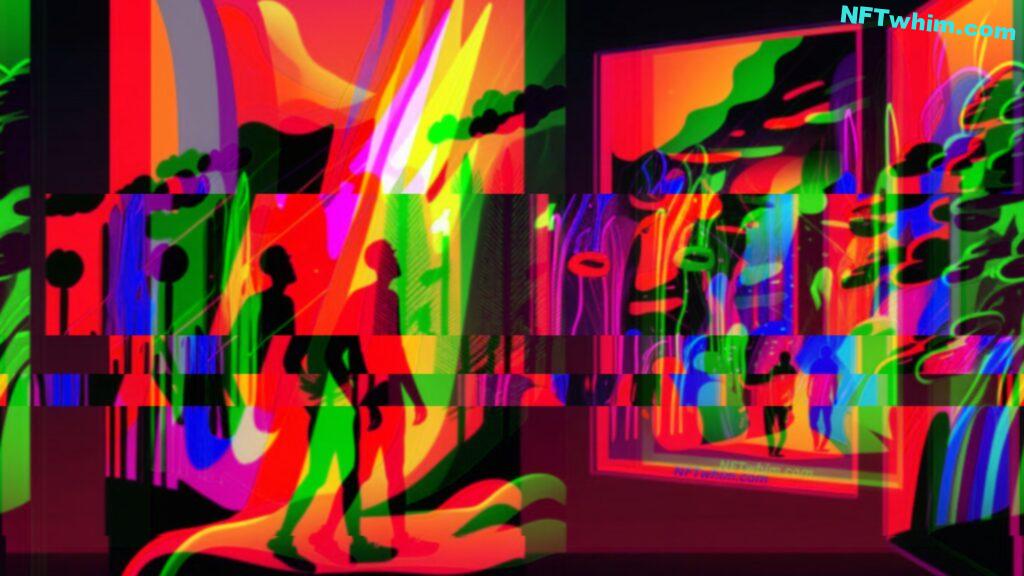
Rise In Popularity of NFT Glitch Art
NFT Glitch Art has attracted a lot of attention over the past few years. And, as technology continues to advance, more and more people are becoming interested in this disruptive digital art form.
What’s interesting about NFT Glitch Art is its ability to be used both as a creative outlet and as a means of investment – something that truly sets it apart from other forms of digital artwork. As such, it comes as no surprise that many collectors have taken notice and are looking into acquiring these masterpieces for their own collections or portfolios.
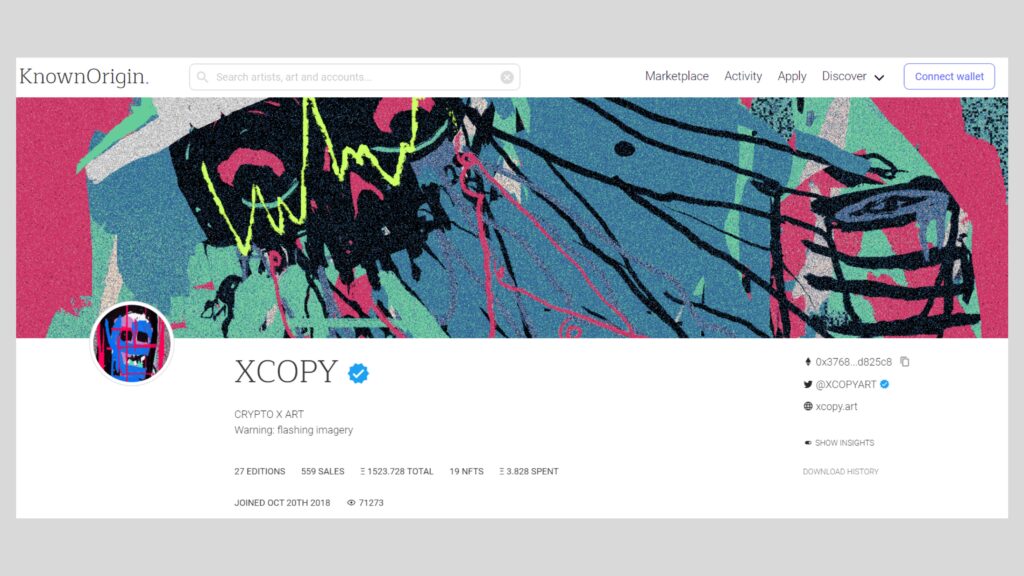
Benefits Of Glitch Art For Collectors And Creators
The revolution of NFT glitch art has brought several opportunities for both collectors and creators: Glitch art collectors gain access to exclusive works from world-renowned artists, while glitch art creators can tap into a global network of galleries and museums seeking out their work. On top of these advantages, the decentralized nature of blockchain technology allows for secure transactions between buyers and sellers, as well as giving more control over pricing and ownership rights to the creator.
For NFT collectors, glitch art provides a unique take on digital artwork which is often not found elsewhere. With its emphasis on experimentation and exploration through code manipulation, each piece is truly unique – making it an exciting investment opportunity that stands apart from other forms of digital media. In addition, there is a limited availability of pieces created by popular artists within the genre, making those NFTs scarce.
Finally, by embracing NFTs and cryptocurrency technologies such as Ethereum’s blockchain, creators have enabled themselves the freedom to monetize their work without relying solely on traditional institutions or platforms like Patreon or Kickstarter. This opens up possibilities for independent creatives who don’t have access to venture capital funding or large sponsorships but still wish to pursue creative projects with meaningful financial rewards at stake. By tapping into a growing market where demand far exceeds supply, they can begin building potential careers centered around their craft and passion.
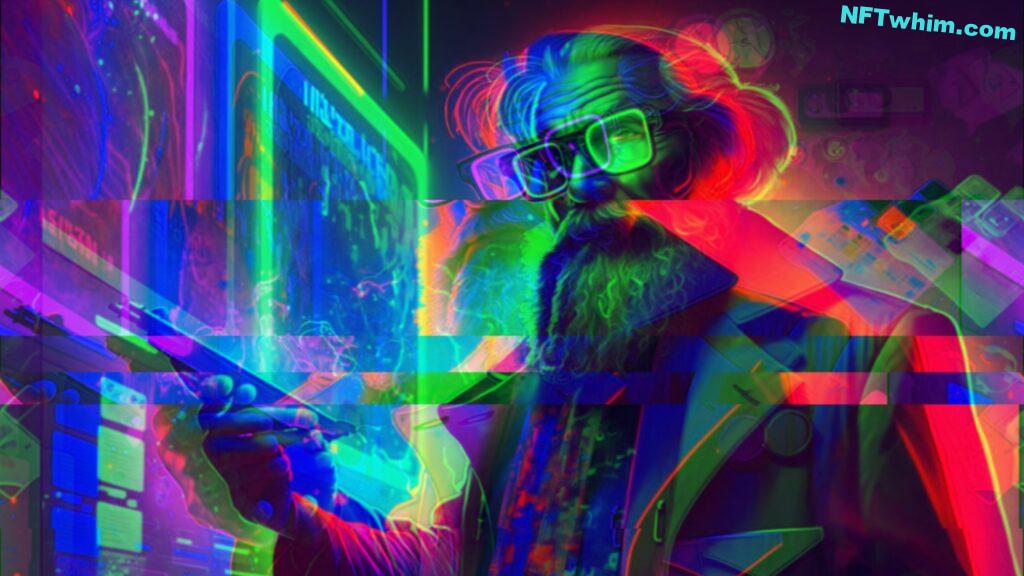
Types Of Glitch Art
NFT Glitch Art is a disruptive digital art form that’s revolutionizing the way artists create and share their work. It has become increasingly popular in recent years, with its unique blend of aesthetic appeal, technological innovation, and creative expression. As such, there are many different types of glitch art one can explore.
Pixel sorting involves rearranging pixels to create abstract images or patterns. This type of glitch art often results in unexpected visual effects, adding an element of surprise to each artwork. Datamoshing is another form of pixel manipulation which involves corrupting video files by intentionally introducing errors into the data stream. Audio glitching uses similar techniques but applies them to audio instead, resulting in distorted sounds and strange noises.
Color banding is a technique used when manipulating color palettes within an image or video file. By carefully adjusting the number of available colors and gradients, this type of glitch art creates a stunning transition between hues while maintaining a sense of harmony throughout the composition. Algorithmic art also plays an important role in NFT glitch art; it refers to any artwork generated using computer algorithms as opposed to manually created imagery. The end result: mesmerizing visuals that provide endless opportunities for experimentation!
Glitch art offers something for everyone – from traditionalists who appreciate its nostalgic aspects to modernists seeking out new forms of creative expression – making it one of the most exciting genres on the cutting edge today.
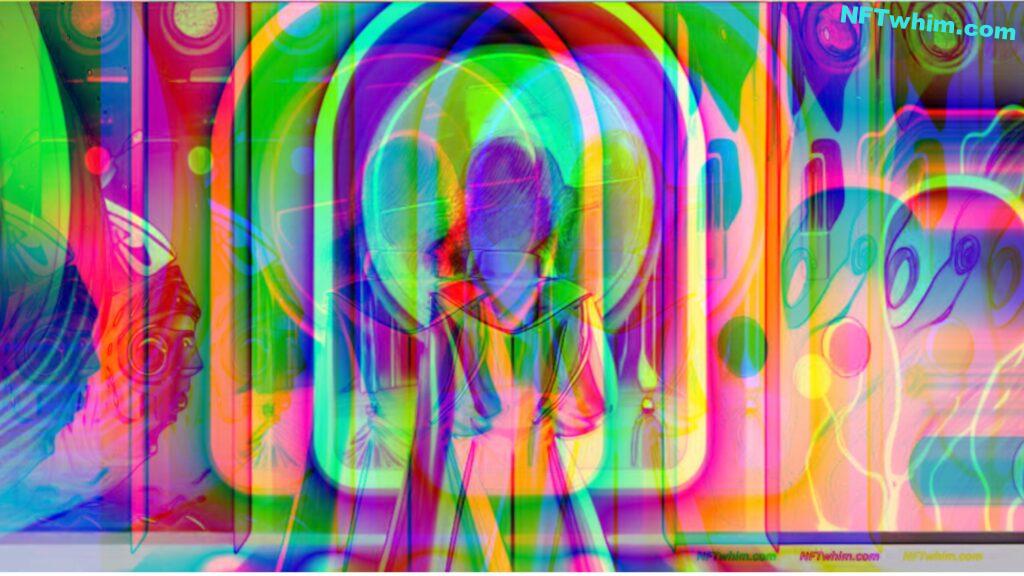
Impact Of NFT Glitch Art On The Digital Art Industry
Like a thunderbolt from the sky, NFT glitch art has arrived to disrupt the digital art industry. Utilizing the power of blockchain technology and non-fungible tokens (NFTs), this new form of digital artwork has opened up a whole new realm of possibilities for artists all over.
The impact of NFT glitch art on the digital art industry cannot be understated. By enabling creators to mint their own pieces and have them permanently stored in a transparent ledger, they are finally able to take ownership over their work while being rewarded financially through sales as well. It also allows collectors to purchase genuine works directly from the artist with confidence, which gives them peace mind knowing that their money is going directly into supporting creativity. Additionally, this disruption can help level out disparities within traditional art markets by providing access to more diverse voices without gatekeepers or middlemen getting involved.
This NFT revolution has not only created a vibrant platform for independent artists but also allowed larger institutions such as museums and galleries to join in on the fun too. As these entities gain access to this revolutionary form of digital artwork, opportunities will open up for even greater collaboration between different creative communities worldwide – something we haven’t yet seen before now in our history. The future looks bright indeed!
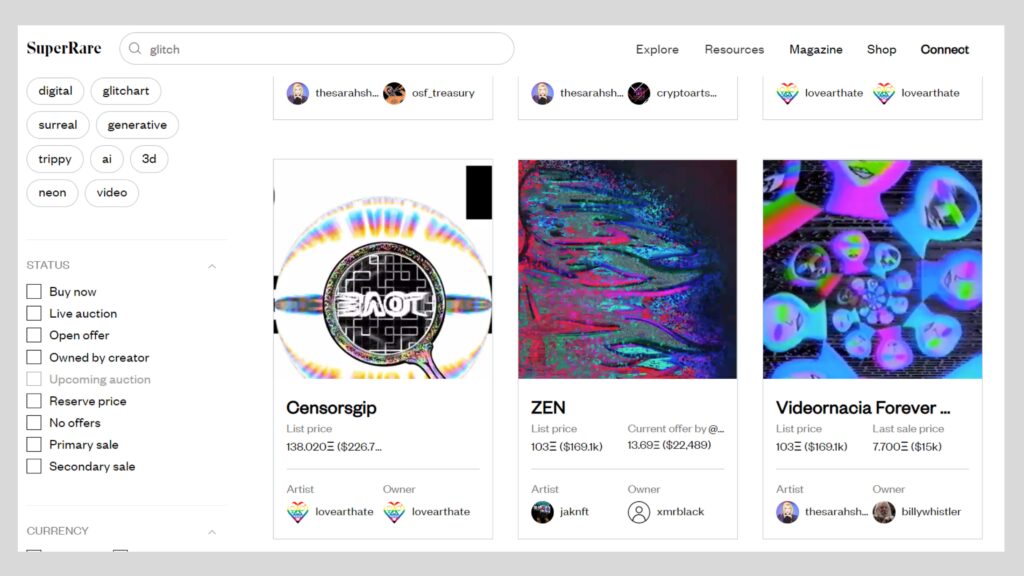
Challenges Faced By NFT Glitch Artists And Collectors
The digital art industry has seen unprecedented growth in recent years, with the emergence of NFTs, including glitch art NFTs. Despite this rapid development, artists and collectors are faced with a number of challenges specific to this new form of art.
For starters, there is an element of risk involved when dealing with a largely unregulated market like the NFT one. As such, it’s crucial for both buyers and sellers to be aware of potential pitfalls associated with trading in these assets. Additionally, since much of the artwork being sold through niche platforms like OpenSea, and is based on code rather than physical objects, understanding how to properly protect intellectual property rights can be difficult. Artists must also grapple with copyright issues that may arise from re-using existing works or images without permission, as well as other legal matters related to selling their creations online (depending on the region’s regulation).
Finally, navigating the ever-changing landscape of technological trends can prove tricky for those unfamiliar with blockchain technology and cryptocurrencies. Establishing trust between buyers and sellers requires a level of knowledge about wallet security protocols and transaction fees that many people simply do not possess yet. Collectors too need to understand how taxes work in relation to their purchases if they want to ensure compliance down the line.
The revolution sparked by NFTs and glitch art has undoubtedly been disruptive; however, overcoming some of these obstacles will be necessary if we wish to see further progress within this burgeoning field.
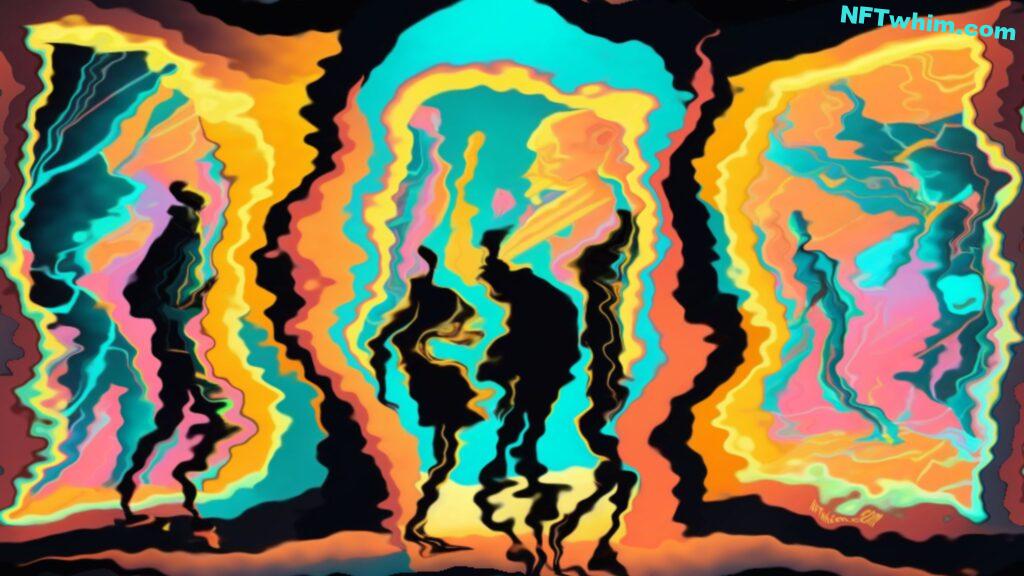
Criticism Of NFTs And Glitch Art
Despite the growing popularity of NFTs and Glitch Art, there have been critiques from both within and outside of the art world. One particular criticism focuses on the investment aspect of NFTs. Critics argue that while there may be some potential profit-making opportunities, most investors are likely to end up with empty wallets due to the speculative nature of this market. Additionally, many worry that non-fungible tokens are creating an unsustainable bubble which could burst at any moment.
Another critique is directed towards the NFT glitch artworks themselves, and other art NFTs, as critics questions their artistic qualities. They point out that many pieces lack originality or substance, as they’re often just remixes or reinterpretations of existing works without much added creativity. This has led to a widespread debate over what actually constitutes “art” when it comes to these digital assets.
Furthermore, many fear that the commodification of creative work through NFTs will lead to increased exploitation and erosion of artist rights by corporations and wealthy individuals who can afford to purchase large portfolios of collectibles—essentially monopolizing entire segments of the digital art market.
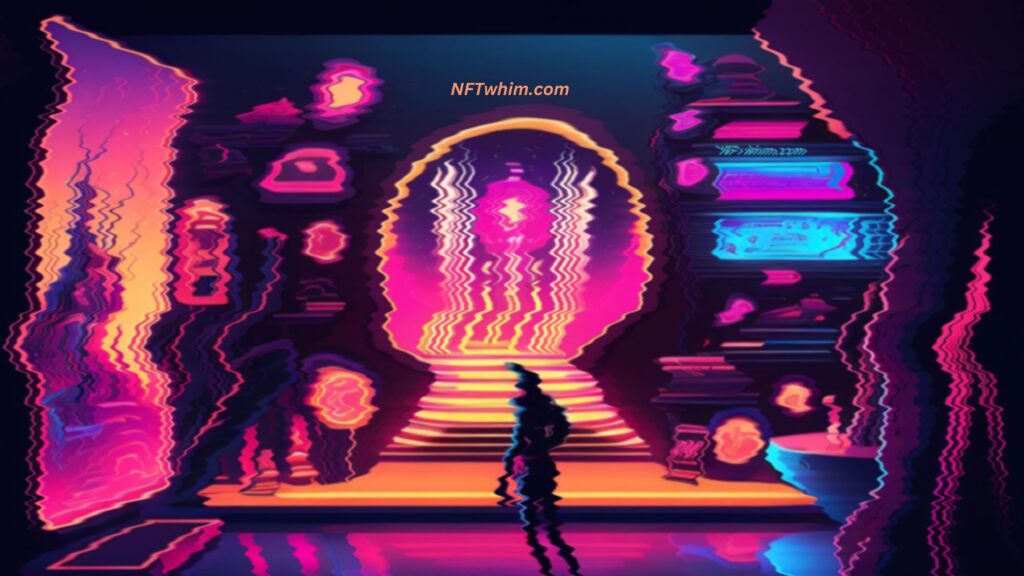
Pros And Cons Of Collecting NFTs
Collecting NFTs is quickly becoming the latest trend in digital art. The pros and cons of collecting these non-fungible tokens are worth considering before devoting time or money to this new form of art.
The first pro to consider when it comes to collecting NFTs is that they offer a unique way for individuals to invest their money. Collectors can purchase artwork created by artists from all over the world, without having to worry about physical storage or transport costs associated with traditional forms of art.
On the other hand, there are also some potential cons associated with collecting NFTs. For instance, since the market for buying and selling these tokens is still relatively unregulated, many buyers may find themselves unable to trust certain sellers or platforms. And it can be complex to learn how to verify the authenticity of each NFT by yourself on blockchain. Furthermore, due to the rapid rise in popularity of this type of artform recently, prices have been known to fluctuate drastically – leaving collectors very vulnerable to sudden losses.
Despite these risks however, it’s clear that collecting NFTs offers a completely different approach towards digital art appreciation that isn’t available anywhere else right now.
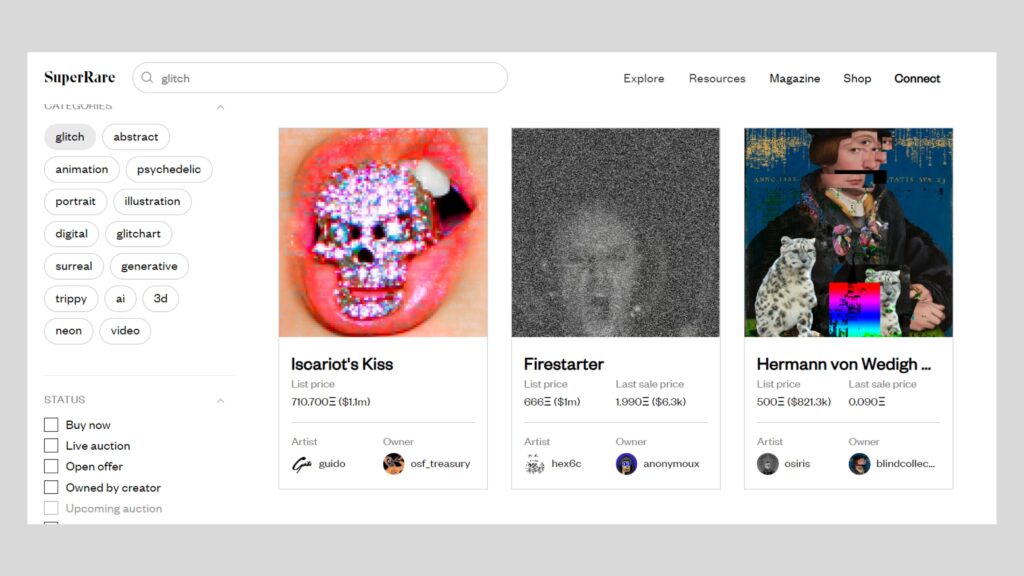
How To Buy And Sell NFTs
Buying and selling NFTs is a process that can be done fairly easily. It’s important to understand the basics before diving in to avoid any potential pitfalls or losses.
To get started, it’s essential to have access to an online marketplace for digital art – these are typically specialized websites that allow users to buy, sell, and trade digital artworks represented as NFTs. Examples of popular marketplaces include OpenSea, Rarible, SuperRare, Foundation and NiftyGateway. All these platforms offer different features and fees associated with buying/selling transactions.
It’s also important to consider which cryptocurrency you want to use when trading on one of these sites. Ethereum (ETH) is currently the most widely used crypto currency for obtaining NFTs due to its smart contract technology which allows Etherium-based tokens – i.e., ERC20 tokens – to represent them on blockchain networks like Ethereum itself.
Here’s a quick guide on how to buy and sell NFTs on known marketplaces such as Opensea:
- To purchase an NFT using ETH directly from your wallet:
- You’ll need web3 enabled browser extension such as MetaMask & Trust Wallet installed on your device.
- Select “Buy Now” button if available next to the artwork listing otherwise contact the seller via their profile page.
- Sign transaction request in order to complete purchase & receive ownership certificate then store it securely offline or in a private cloud storage solution.
- To purchase an NFT using fiat or other cryptocurrency:
- Identify trusted exchange platform offering services for exchanging fiat money into ETH, or the cryptocurrency that is used for transactions on that platform.
- Create account at the chosen platform and follow instructions for transferring funds into internal balance.
- Use a compatible wallet supporting both crypto coins and selected network protocol, e.g. a Metamask wallet or TrustWallet.
- To sell an NFT:
- Connect existing wallet (e.g. Metamask) by signing up with chosen marketplace or create new one with supported service provider (e.g. Coinbase Wallet).
- Transfer desired asset from external address into custody of marketplace while providing necessary information about artwork including title description artist name etc., if not provided automatically.
- Set price, list item, and don’t forget to update details regularly and monitor bidding, and/or activity payments received.
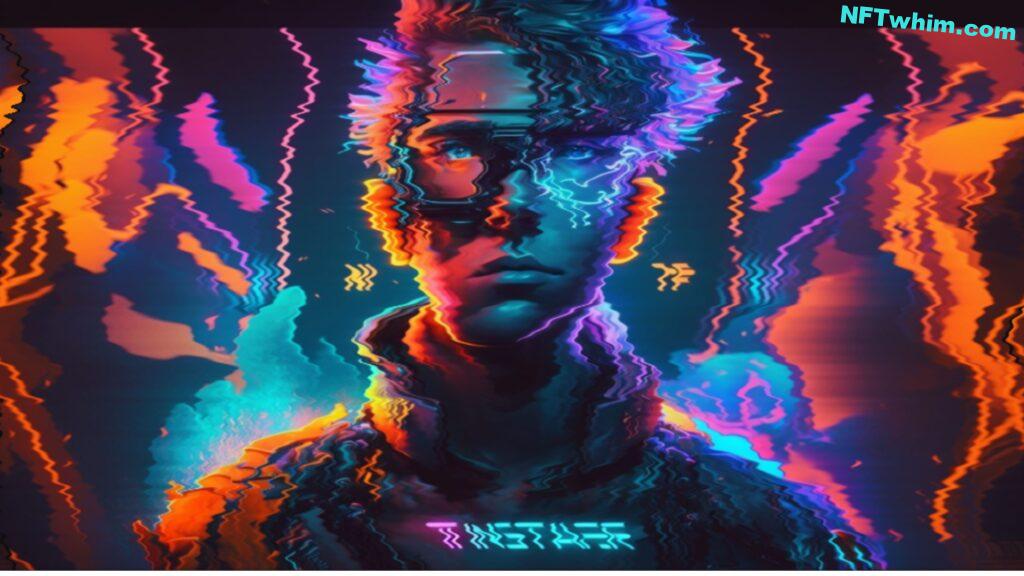
Are NFTs Here To Stay?
Imagining a future where digital art and NFTs are the norm, it’s hard to deny their potential. As time passes by with increasing technological advancement and innovation, new opportunities arise for creators to explore through the use of NFTs. This exciting prospect raises an important question: Are NFTs here to stay?
It is clear that there will be long-term implications in regards to the permanence of these unique pieces of art. While much speculation exists around how NFTs will fare over a longer period of time, one thing is certain—they do have longevity like any other medium or form of artwork. For example, physical works can survive centuries if treated correctly while digital NFT artwork registered on the blockchain has (so far!) been preserved on servers since its inception.
The idea that something once deemed so novel could become part of everyday life isn’t just possible; it’s probable I would argue. With more platforms offering creators tools such as blockchain technology and smart contracts, what was previously seen as innovative now looks set to revolutionize how we think about digital art forever. The possibilities afforded by this new era of creative expression know no bounds, which means that when looking at the long-term prospects for NFTs – I believe they seem assured!
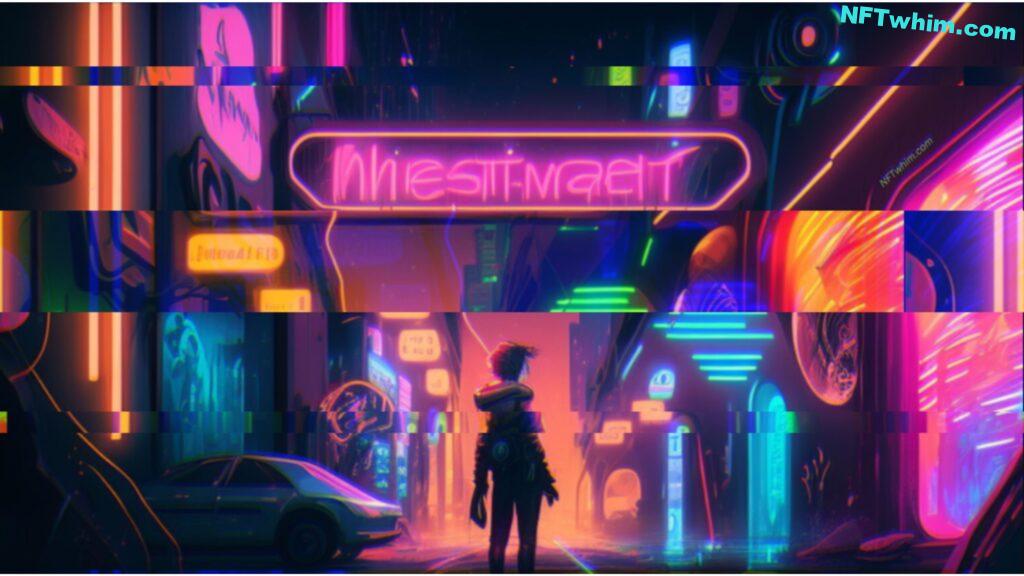
Implications Of NFT Glitch Art For The Future
The implications of NFT Glitch Art are far-reaching and long-term. It is clear that this disruptive digital artform will have an impact on the future of the art market, as well as its collectors and consumers.
From a collector’s perspective, there are several potential implications for the future. Firstly, it is likely to be more accessible than traditional forms of art due to its low cost entry point and ease of use.
Also, it opens up new opportunities for collectors by introducing a whole range of unique artistic styles not typically found in other markets.
Overall, NFT Glitch Art represents an exciting opportunity for both creators and fans alike – one where freedom reigns supreme thanks to its decentralized nature. Its ability to challenge existing conventions while providing access to unique artwork makes it well worth exploring what lies ahead in terms of creative possibilities and potential impacts on the wider industry landscape.
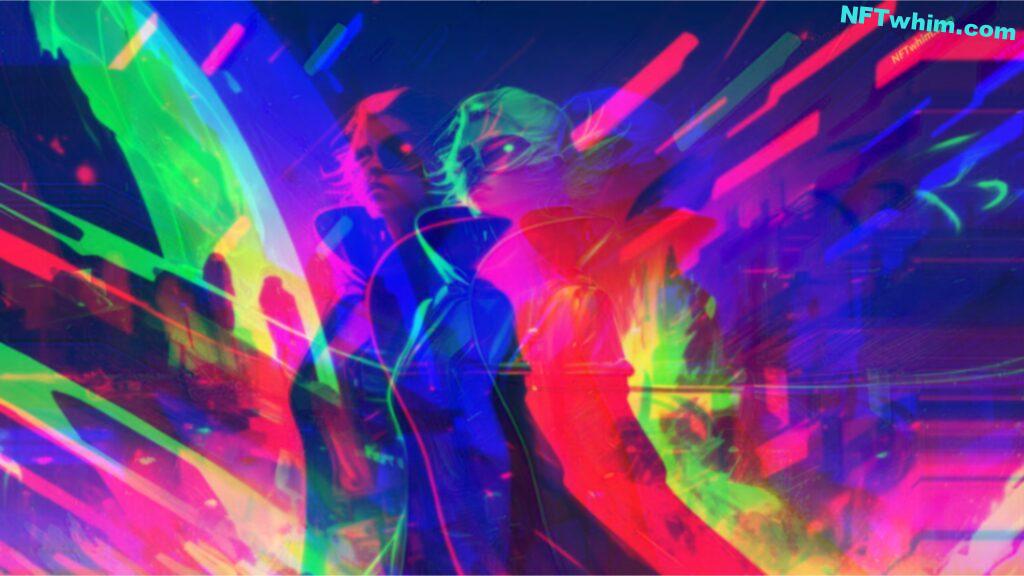
Concluding Thoughts
We have reached the end of our journey through NFT glitch art. It has been an exciting exploration into this disruptive digital art form, with a wealth of fascinating insights and implications for the future. As we take a moment to reflect on what we’ve learned, it’s essential that we consider both the positive and negative aspects of its growth in popularity among collectors and creators alike.
All in all, NFT glitch art is undoubtedly shaking up the traditional art industry, challenging long-held notions about ownership, value, and authenticity. The rise in popularity of NFTs has enabled countless new opportunities for artists to gain recognition and financial rewards from their work. New markets are opening up as more people join in buying, selling, trading or gifting these unique pieces of digital artwork.
As we look ahead to the future of NFT glitch art, there is no doubt that this revolutionary art form will continue to evolve. We may never know what unexpected forms it could take next but one thing is certain—it will be exciting to watch!
Author: Robin Olsson
Author Bio: I’m Robin and on this website, I share everything I’ve learned since getting into NFTs in 2021. I have a background in research and I’ve been in crypto for several years. You can read more about me here.
